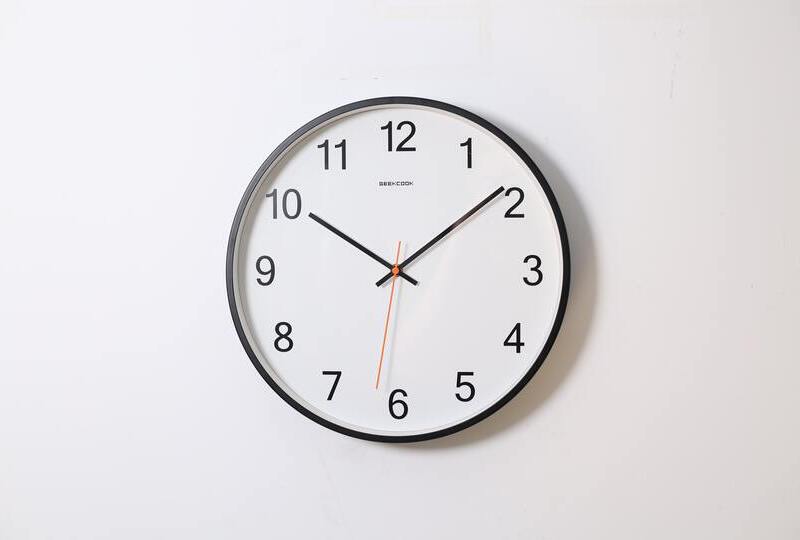How to Tell Time In Spanish

Telling time in Spanish can be tricky! By the end of this article, you’ll have enough knowledge about numbers, time telling terms, and time of day vocabulary to tell time in Spanish like a pro.
Think back to when you learned how to tell time in school. Watching the teacher move big hands and little hands on her plastic clock was like a rite of passage. And if you’re a language learner, you get to do it all over again in Spanish.

Let's Get Started to Tell Time in Spanish
The good news is that telling time in Spanish will be easier since you likely already know how read a clock. In this lesson, we will by-pass the basic skill of telling time to focus on the number system and time telling terms. We will zero in on the numbers that you'll find on a clock, and go over Spanish terms related to time. When you're finished with this lesson, you will know how to ask someone what time it is, and you'll be able to answer them in Spanish with ease.
Numbers In Spanish
The Spanish number system is logical and orderly. The trick is to master the first ten numbers because they appear in all other numbers going forward. Here they are:
| Spanish | Number |
|---|---|
| cero | 0 |
| uno | 1 |
| dos | 2 |
| tres | 3 |
| cuatro | 4 |
| cinco | 5 |
| seis | 6 |
| siete | 7 |
| ocho | 8 |
| nueve | 9 |
| diez | 10 |
| once | 11 |
| doce | 12 |
| trece | 13 |
| catorce | 14 |
| quince | 15 |
After the number 15, the pattern begins. In Spanish, you say the tens number and the word “and”, followed by the number in the ones place. For example, the number 16 would be dieciséis (ten and six). In this example, the word for “and” is the letter i. Once we get into the thirties, we use three words with the word y for the word “and”. For example, 33 would be treinta y tres (thirty and three). Here are the rest of the numbers you will need for telling time:
| Spanish | Number |
|---|---|
| dieciséis | 16 |
| diecisiete | 17 |
| dieciocho | 18 |
| diecinueve | 19 |
| veinte | 20 |
| veintiuno | 21 |
| veintidós | 22 |
| veintitrés | 23 |
| veinticuatro | 24 |
| veinticinco | 25 |
| veintiséis | 26 |
| veintisiete | 27 |
| veintiocho | 28 |
| veintinueve | 29 |
| treinta | 30 |
Technically, it is possible to tell time in Spanish without any numbers greater than 30, but it is possible to use the numbers up to 59. Here are the numbers from 31 - 59.
| Spanish | Number |
|---|---|
| treinta y uno | 31 |
| treinta y dos | 32 |
| treinta y tres | 33 |
| treinta y cuatro | 34 |
| treinta y cinco | 35 |
| treinta y seis | 36 |
| treinta y siete | 37 |
| treinta y ocho | 38 |
| treinta y nueve | 39 |
| cuarenta | 40 |
| cuarenta y uno | 41 |
| cuarenta y dos | 42 |
| cuarenta y tres | 43 |
| cuarenta y cuatro | 44 |
| cuarenta y cinco | 45 |
| cuarenta y seis | 46 |
| cuarenta y siete | 47 |
| cuarenta y ocho | 48 |
| cuarenta y nueve | 49 |
| cincuenta | 50 |
| cincuenta y uno | 51 |
| cincuenta y dos | 52 |
| cincuenta y tres | 53 |
| cincuenta y cuatro | 54 |
| cincuenta y cinco | 55 |
| cincuenta y seis | 56 |
| cincuenta y siete | 57 |
| cincuenta y ocho | 58 |
| cincuenta y nueve | 59 |

Basic Structure of How to Tell Time in Spanish
When you need to ask someone what time it is in Spanish, there is one straightforward question you need to know. ¿Qué hora es? means “What time is it?” You are literally asking “What hour is it?” To answer, you will say “There is one hour” or “There are 2, 3, 4, etc. hours”. Here’s what that looks like:
¿Qué hora es? - What time is it?
Son las dos. - It is 2:00.
¿Qué hora es? - What time is it?
Es la una. - It is 1:00.
For any time between 12:31 - 1:30, es la will be used to mean “it is” instead of son las. Es la is singular, and used anytime we say the hour one, while son las is plural and used for all other hours.
There are two ways to add minutes to your time. From the hour until 30 minutes past the hour, the word y is used. It means “and”. Here are some examples:
Son las cinco y veinte. - It is 5:20.
Es la una y cinco. - It is 1:05.
For times between 30 minutes after the hour until the next hour, the process is a little trickier. We say the next hour minus the number of minutes until that hour. Here are some examples with their literal meanings to help you:
Son las cinco menos cinco. - It is five minus five. (4:55)
Es la una menos diez - It is one minus ten. (12:50)
Some Spanish speakers use the first method with larger numbers, so instead of saying one minus ten for 12:50, they’ll say twelve and fifty, Son las doce y cincuenta. The subtraction method is more common in Spain. Here are some more examples written in both ways:
| Time | Subtraction | Addition |
|---|---|---|
| 4:35 | Son las cinco menos veinticinco | Son las cinco y treinta y cinco |
| 7:48 | Son las ocho menos doce | Son las ocho y cuarenta y ocho |
| 8:40 | Son las nueve menos veinte | Son las ocho y cuarenta |
| 10:32 | Son las once menos veintiocho | Son las diez y treinta y dos |
| 11:46 | Son las doce menos dieciséis | Son las once y cuarenta y seis |
| 9:38 | Son las diez menos veintidós | Son las nueve y treinta y ocho |
| 3:58 | Son las cuatro menos dos | Son las tres y cincuenta y ocho |

Special Time Terms in Spanish
There are special words used for some of the times that you’ll need to know. For any time 30 minutes after the hour, the word media must replace the word for thirty. This is the only mandatory rule in Spanish. The rest are optional. For any time 15 minutes before or after the hour, you may use the word cuarto to mean quarter. For any time on the hour, you may use the phrase en punto to mean “on the dot”. Here are a few examples:
| Time | Spanish |
|---|---|
| 4:00 | Son las cuatro en punto. |
| 4:15 | Son las cuatro y cuarto. |
| 4:30 | Son las cuatro y media. |
| 4:45 | Son las cuatro menos cuarto. |

Time of Day in Spanish
In addition to stating the time in Spanish, you also have the option of specifying the time of day that you’re talking about. This comes in handy if you need to differentiate between AM and PM. The following phrases are added to the end of the time to specify the time of day in Spanish:
| Spanish | English |
|---|---|
| De la mañana | In the morning |
| De la tarde | In the afternoon |
| De la noche | In the evening |
Depending on the country you find yourself in, these expressions may have different meanings. You may notice people saying “in the afternoon” for a time that you would consider to be in the evening. In Latin America and Spain, the afternoon (la tarde) may not end until as late as 8:00 PM! There is individual variation on this, but as a general rule, “in the evening” is not said until it is dark out!

Now Go Practice!
Telling time can be difficult at first. There are so many small things to remember and put together. With a little practice, it gets easier. One great way to practice is by speaking Spanish with a native speaker of the language. Speechling has resources that can help you do just that. The most important thing to remember is to be patient with yourself and give yourself the time you need to get used to the material. Learning a language can be very overwhelming, but as you review it and think about it, the pieces will come together.